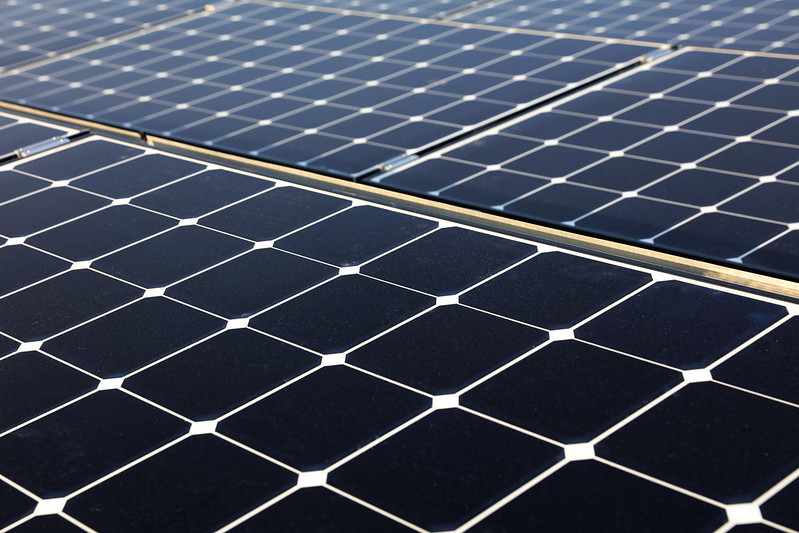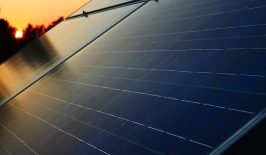What if you could farm energy and edibles on the same piece of land?
We recently wrote about the concept of “pollinator-friendly solar power” – an approach to planting the land around and inside a solar farm with carefully selected plants and vegetation to support pollinators like bees, beetles and butterflies. The study had found doing so not only benefited the solar panels, but also saw yield improve in the surrounding agricultural land.
And now Fraunhofer ISE, the largest solar research institute in Europe, is developing another, similar approach that sees solar powers and plants work in symbiosis. The idea is to combine farm cropping land with solar panels by installing elevated panels above the crops to allow them to grow and give them shade, while at the same time harvesting the energy from the sun. Fraunhofer calls this co-development approach “agrophotovoltaics” and it has the potential to make conflicts over agricultural land use for solar farms a thing of the past.
In 2016 the idea was commissioned into a real project in the German state of Baden-Württemberg, next to Lake Constance. A 12-month project test was installed on one-third of a hectare, with a 194kW solar photovoltaic system set up five-metres above the ground and organic crops grown below.
Winter wheat, potatoes, celeriac and clover grass were the first crops to be tested. Semi-transparent glass modules were used to ensure that at least 60 percent of normal sunlight could reach the crops for photosynthesis. The crops could be harvested without the panels getting in the way of tractors and other equipment, the panels were placed high enough to allow the crops planted below to receive almost as much sunshine as they would if the panels were not there. While there were lower yields for some crops – a 5.3 percent reduction in clover grass and 18 to 19 per cent reduction in potatoes, wheat and celeriac – the year-long project was a success for overall land use efficiency – with efficiency increasing by over 60 per cent.
This kind of dual land use therefore appears to have a host of benefits: as well as being resource efficient, it also reduces competition for land, opens up new space that is urgently needed for the expansion of solar energy farms, and offers farmers a new source of income.
With the success of the first project, Fraunhofer is now busy working on two more – in Chile and in Vietnam – both countries where solar radiation is higher and the system can have even more of an impact. Three 13 kWh photovoltaic systems have already been installed in the Chilean communities of El Monte, Curacavi and Lampa, with a focus on crops such as broccoli and cauliflower, that typically thrive in partially-shaded environments. Each solar plant is able to provide power for homes, irrigation and cooling, among other things, and it is at times the sole source of power during regional power cuts. Fraunhofer ISE described the initial tests as “very positive” with the project set to run for three more years in order for them to work out best practice methods.
The second project, in Vietnam, involved adding an elevated solar system above an aquaculture setup, where shrimp is farmed in ponds. As well as the panels producing solar energy, shrimp production was also given a boost because the panels offered extra protection from predators, lowered the water temperature which helped promote shrimp growth, improved the working conditions by supplying shade, and reduced the overall water usage.
Other “agrovoltaic” or “solar sharing” projects – where photovoltaic panels work in symbiosis with agricultural production, offering shade to crops and improving production – are also showing encouraging signs for dual-use land in Massachusetts and Arizona in the US, Germany, France, Italy, and Croatia in Europe, as well as in Japan and China.





